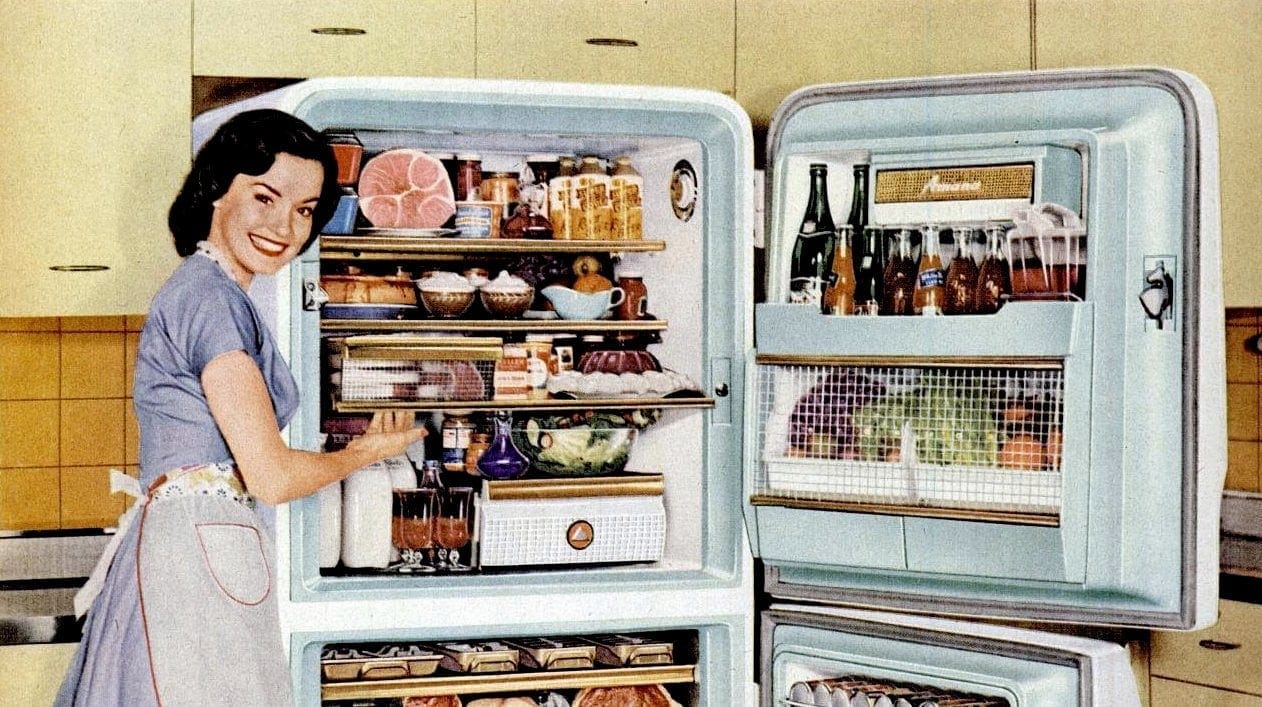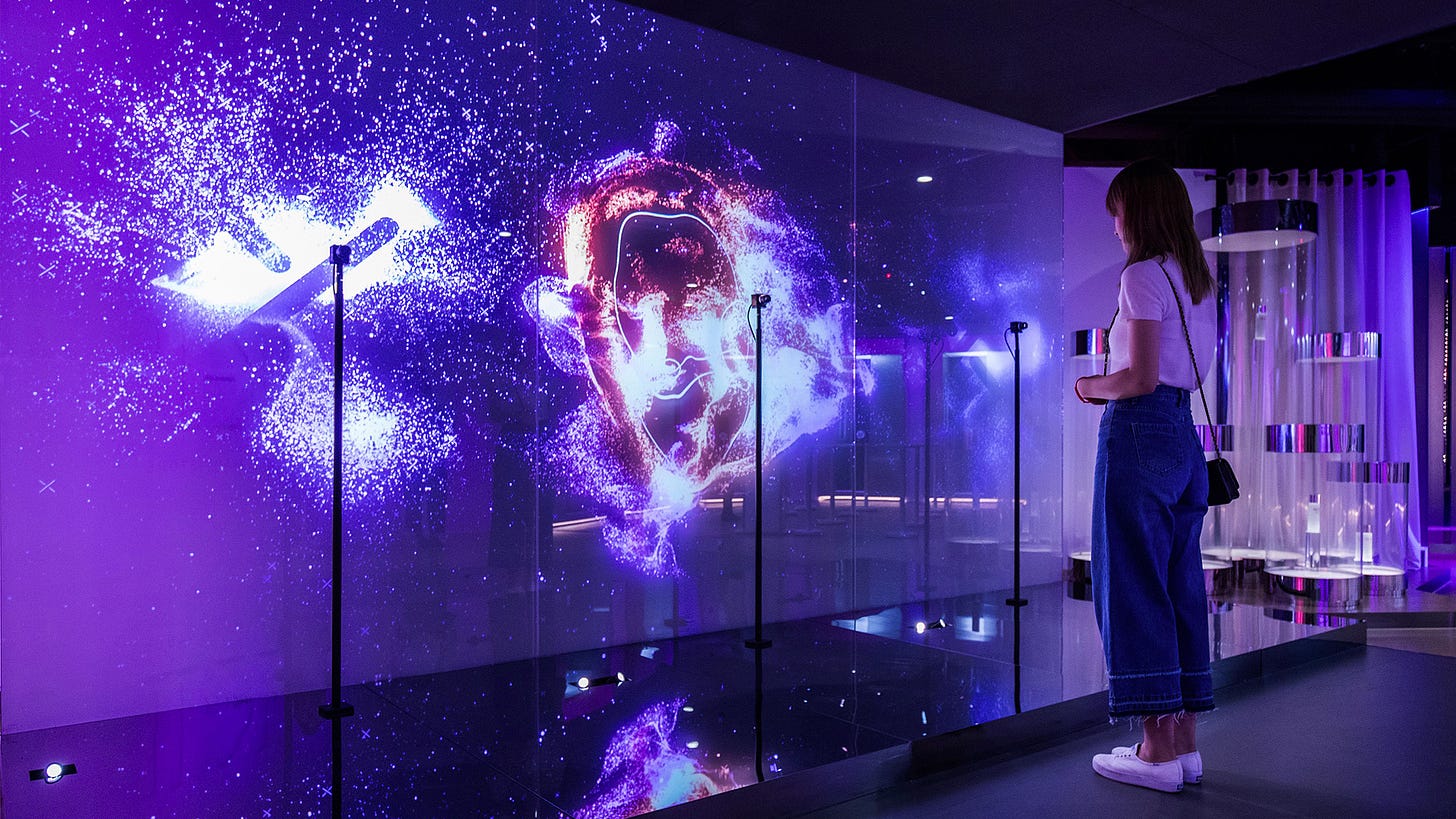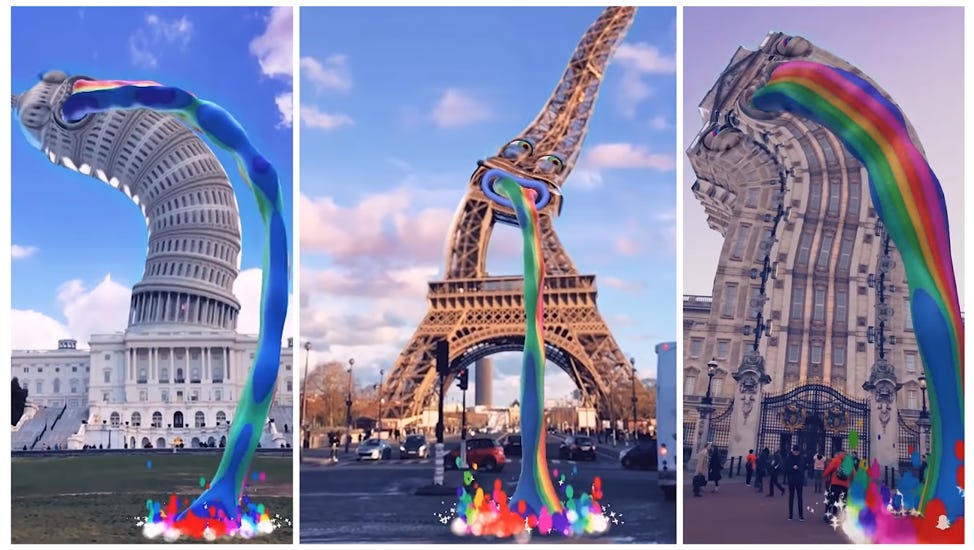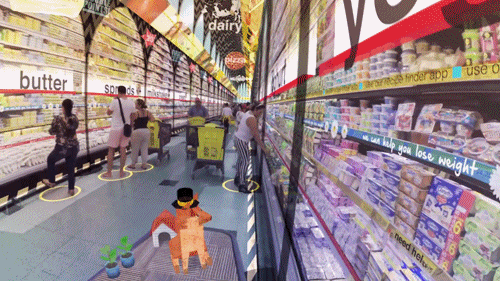New World Same Humans #45
The next filter bubble won't be on information, but on reality itself. And the implications are far-reaching.
Welcome to New World Same Humans, a weekly newsletter on trends, technology, and society by David Mattin.
If you’re reading this and you haven’t yet subscribed, then join 14,000+ curious souls on a journey to build a better shared future 🚀🔮
🎧 If you’d prefer to listen to this week’s instalment, go here for the audio version of New World Same Humans #45. 🎧
The internet has rewired us.
By which I mean: a connected world relentlessly fuels new human behaviours, habits, and expectations. And once they’ve been created, they spread. We bring those new habits and expectations to other aspects of our lives. Often, we bring them out of the online space and into the physical world around us.
A particularly powerful version of that phenomenon is now emerging into view. And it will, I believe, reshape the socio-economic system that you and I live inside: the consumer society.
This is a story about personalisation and where it’s heading next. Skip to the end and the answer is: to some pretty strange places.
But let’s start at the beginning. Reminder: if you prefer, you can listen to this essay as a podcast. If not, then read on.
📥 Fast Download: The Reality Filter Bubble
👑 In a connected world personalisation is king. Historically, consumerism has been ruled by two opposing imperatives. Cheap but the same as everyone else, or unique to you but expensive. A revolution fuelled by the former imperative was the Big Story of 20th-century consumerism: mass production gave us cheap bookcases, cars, fridges. But today, consumption for millions revolves around non-material, higher-order needs: status, creativity, meaning. People often seek fulfilment of these needs not via physical objects, but online. The online world makes possible cheap and unique to you. That’s a revolution, centred around personalisation. So where is this revolution heading?
🏙️ Data-fuelled personalisation will transform our experience of the physical world. Online personalisation is data-fuelled personalisation. In the coming decade, we’ll see this kind of personalisation shift into the physical world, too. That means personalised devices, foods, and cosmetics, and physical spaces that shapeshift around our identity and preferences. This is the next Big Story: a metamorphic physical environment able to change around our needs and wants.
🧬 The ultimate form of personal data is here. A quick side note. As new and deeper forms of personal data become available, new and more powerful forms of personalisation will emerge. Back in 2007 it cost over $1 million to sequence a human genome; today it costs a few hundred dollars. A new era of DNA-personalised consumerism is coming.
🤯 The next filter bubble is a reality filter bubble. What is the end game here? A new generation of AR technologies allow a large-scale, persistent, and shareable digital layer to be built on top of the physical environment. Crucially, these new realities will be personalised. Millions will be served AR worlds shaped around their individual tastes, preferences, and behaviours. The next filter bubble won’t be on content and news, but on the shared physical spaces in which we live much of our lives. Welcome to the reality filter bubble.
🧞 Old consumerism made everything the same for all; new consumerism makes everything different for each. The big criticism levelled at 20th-century consumerism was that everyone ended up wearing the same 501s, driving the same Ford, and eating the same Big Mac. The deeper and more persistent problem with an evolved consumerism is not the ways it makes everything the same for us all, but the ways it makes everything different for each of us. That is, the way it pushes us down personalised wormholes, from which our access to one another is diminished. This phenomenon is new, and poorly understood. But it is a part of the coming Big Story. We need to start writing it now, before it writes us.
👑 In a connected world personalisation is king
The system we call consumerism is ruled by two imperatives. Historically, they pull in opposite directions.
First, there’s value: the imperative to make things cheap. It gives rise to principles and technologies now closely associated with the emergence of the consumer society: economies of scale, mass production, standardisation.
Meanwhile, there’s relevance: the imperative to make things just the way we want them. People are all different, so this imperative quickly becomes about the ability to serve a set of preferences unique to a specific person. Like value, personalisation has always been part of the story of consumerism. Consider the boast of the Saville Row tailor: made to measure. The benefits here are obvious; we all want precisely what we want. But the problem is clear, too. Personalisation is expensive.
Two opposing imperatives: cheap but the same as everyone else, or unique to you but expensive. Crucially, they haven’t exerted an equal influence. For most of the history of consumerism, one imperative had clear primacy. It was mass production, above all else, that fuelled the 20th-century consumer revolution. Think the Ford Model T, the first home refrigerators, the IKEA bookshelf. This was a consumerism aimed at material needs. Its magic was to make expensive objects affordable, and so transform life for millions. Personalisation was a part of 20th-century consumerism too. But it wasn’t the Big Story.
Today, much has changed. Many lucky enough to live in affluent societies take the fulfilment of their material needs for granted. Instead, their preoccupations revolve around higher-order needs such as creativity, status, and meaning. And the part of their consumption that seems to best serve these needs – and that seems most exciting to them – often isn’t about physical objects, but online services. Think Twitter, Fortnite, or Tinder.
Why is this significant?
At the heart of the shift enacted by digital is a powerful truth. A digital world explodes the old calculus around consumerism’s two ruling imperatives, mass produced and cheap or unique and expensive. Because online, where the cost of one more is zero, you can have it both ways. You can have cheap and unique to you. And that’s a revolution.
To summarise: in a 20th-century world of scarcity, and physical consumption intended to serve material needs, the primary imperative tends to be mass. But in a 21st-century world of abundance, and dematerialised consumption intended to serve higher-order needs, it tends to be personalised.
This story – this new chapter in the evolution of the consumer society – is just getting started. So it pays to ask: where is it heading? What will it mean for the businesses we run, the lives we lead, and our shared future?
And it turns out the answers takes us to some surprising places.
🏙️ Data-fuelled personalisation will transform our experience of the physical world
Via the emergence of the internet, new forms of personalisation have been the Big Story inside consumerism for more than a decade now. That story has been made possible not only by zero marginal cost, but also by data. Online personalisation is data-fuelled personalisation.
Any number of recent innovations exemplify this point. Look at, say, Spotify. When Spotify launched its data-fuelled Discover Weekly playlists back in 2015, many users were astounded. Here was a music service that seemed to understand them in a way that was deep; almost spooky.

To run through the iconic innovations of 2010s-era consumerism is to give a potted history of data-fuelled personalisation. Today’s consumer is fed a personalised stream of TV content by Netflix. Meanwhile, Tinder provides her with a personalised feed of available partners. And her Apple Watch collects physiological data and sends back personalised health and activity advice. Even when the final purchase is a physical object, the online revolution was one founded partly in personalisation. Amazon was exciting because it put an algorithmically-fuelled, personalised shop window in front of all of us. First that window was on to the world of books; then it was on to everything.
But humans adapt fast, and what was astounding in 2010 is expected in 2020. So where next for the Big Story that is personalisation?
One powerful emerging trend will do much to shape our lives across the next decade. We’ll see the kind of data-fuelled personalisation we associate with the online world shift into the physical world, too. That means not only personalised music playlists, but personalised devices, foods, and cosmetics, and physical spaces that shapeshift around our identity and preferences.
This trend is made possible by the arrival of new technologies – objects, sensors, facial recognition tech and AI – that blur the boundaries between online and physical. In so doing, they circumvent the cost prohibition that often prevented physical personalisation.
Again, some examples. Tonal is a connected workout station that collects physiological data and adjusts exercise difficultly accordingly. SHOT is a smoothie mixer that uses a built-in camera and AI to analyse skin health and then create a personalised recipe for a skin-enhancing smoothie.
Last year, Japanese beauty giant Shiseido launched a new skincare service called Optune: users take a selfie each day, and data on their skin health is put alongside that on sleep and environmental factors, and crunched by an algorithm. The output is a recipe for a personalised skin cream, which is then mixed each day by a special device.
Meanwhile, facial recognition makes possible a world in which physical spaces are able to recognise and respond to the individuals passing through them.
These kinds of Sentient Spaces are already emerging. Kia Motors are developing in-car interiors that leverage facial recognition to respond to driver attention and mood. Meanwhile, beauty brand SK-II made headlines when they trialled a facial recognition-fuelled concept store that provides a personalised experience to shoppers, including touchscreens that display personalised product recommendations. Via the pandemic, a host of similar automated and sentient retail spaces are on the way.
Online data-fuelled personalisation was the big story of early 21st-century consumerism. But the next story – via connected objects, sensors, facial recognition and AI – is about a metamorphic physical environment able to shift around our needs and wants.
🧬 The ultimate form of personal data is here
A quick side note. As new and deeper forms of personal data become available, new and more powerful forms of personalisation will emerge.
This direction of travel is already evident. Amazon’s first personalised experience was made possible by extremely simple data, which captured the books you have browsed or purchased. This year Amazon announced the new Halo device, which will give personalised communication advice based on physiological and voice data that allows a real-time picture of your mood.
The next step? Back in 2007 it cost over $1 million to sequence a human genome; today it costs a few hundred dollars. A new era of DNA-personalised consumerism is coming.
The world’s largest food brand, Nestlé, is already embracing that future. It’s running a huge trial of DNA-personalised food supplements with over 100,000 consumers in Japan.
🤯 The next filter bubble is a reality filter bubble
What is the end game here?
In 2020, the boundaries between physical and digital are blurring in a new and even more powerful way. And that has profound implications for the journey outlined in this essay.
At the heart of this shift are a new generation of augmented reality technologies. They allow a large-scale, persistent, and shareable digital layer – in effect, a new digital reality – to be built on top of the physical environment. One of the most powerful examples of this evolution was launched this year by Snapchat, who call their technology Local Lenses.
5G networks will make possible far more complex and immersive shared AR worlds. Fast-forward to a device that brings AR to your eyeballs rather than your phone screen – basically Google Glass but executed well – and the possibilities are astounding. They are nothing less than the emergence of a metaverse, a new kind of reality that blends the physical environment with a digital layer limited only by our imagination.
And the significance for this essay? Those new realities will be personalised.
Millions will be served AR worlds shaped around their individual tastes, preferences, and behaviours as captured by their personal data. Imagine an Amazon Halo-type device that captures your consumption, physiological, and mood data, and then shapes the AR world you see around you. It can propel you into a new reality that you’ll occupy with others who share, say, your taste in music, your interest in street art, your fitness level, or your politics. Or it can devise a totally individualised AR world, for you and you alone.
In this age of online data-fuelled personalisation, we’ve talked a lot about the filter bubble. That is, the tendency of online algorithms to serve people only content and news that reinforces their opinions, such that they end up trapped inside their own worldview, unable to access or understand other perspectives. There’s some evidence that filter bubbles have helped create more polarised societies, but the picture is mixed.
Still, it may turn out that the information filter bubble was only the precursor to something far more powerful. Under this view, the next filter bubble won’t be on content and news, but on the shared physical spaces in which we live much of our lives and which form the backdrop to our societies. Welcome to the reality filter bubble.
We’re a long way from all this right now. But the direction of travel is clear. It’s hard to see how a panoply of data-personalised AR worlds are not part of our future. If this comes to pass, what are the implications? For consumer culture? For our democracies? For our sense of ourselves as part of a single, shared reality?
🧞 Old consumerism made everything the same for all; new consumerism makes everything different for each
The big criticism levelled at 20th-century consumerism was that it led to a kind of Great Homogenisation, in which everyone ended up wearing the same 501s, driving the same Ford, and eating the same Big Mac.
There was some truth to that. But it seems increasingly clear that the power of this criticism is waning; that it turns out to be applicable only to the first, relatively primitive iteration of modern consumerism.
The deeper and more persistent problem with an evolved consumerism is quite the opposite: not the ways it makes everything the same for us all, but the ways it makes everything different for each of us. That is, the way it pushes us down personalised wormholes, and into individualised realities, from which our access to one another is diminished.
This phenomenon is new, and poorly understood. But via emerging technologies – from connected objects, to genome sequencing, to AR – it will become an increasingly important part of our consumerism in the years ahead.
This is the coming evolution of consumerism. This is the coming Big Story. We need to start writing it now, before it writes us.
Reality check
Thanks for reading this week.
Want to debate the ideas you’ve absorbed? Join us in the NWSH Slack channel!
If immersive AR worlds plunge us into new and personalised realities, the opportunities will be dizzying.
But in the meantime, we in the New World Same Humans community are forging our own shared space!
We started as a small tribe back in January; today we encompass more than 14,000 smart people – founders, strategists, designers, coders, policy makers and much more. If you help our community expand, you make it more useful for all of us. And all you have to do is share.
So if you found today’s instalment valuable, why not take a second to forward this email to one person – a friend, relative, or colleague – who’d also enjoy it? Or share New World Same Humans across one of your social networks, and let others know why you think it’s worth their time. Just hit the share button:
I’ll be back on Wednesday with New Week Same Humans. Until then, be well,
David.








